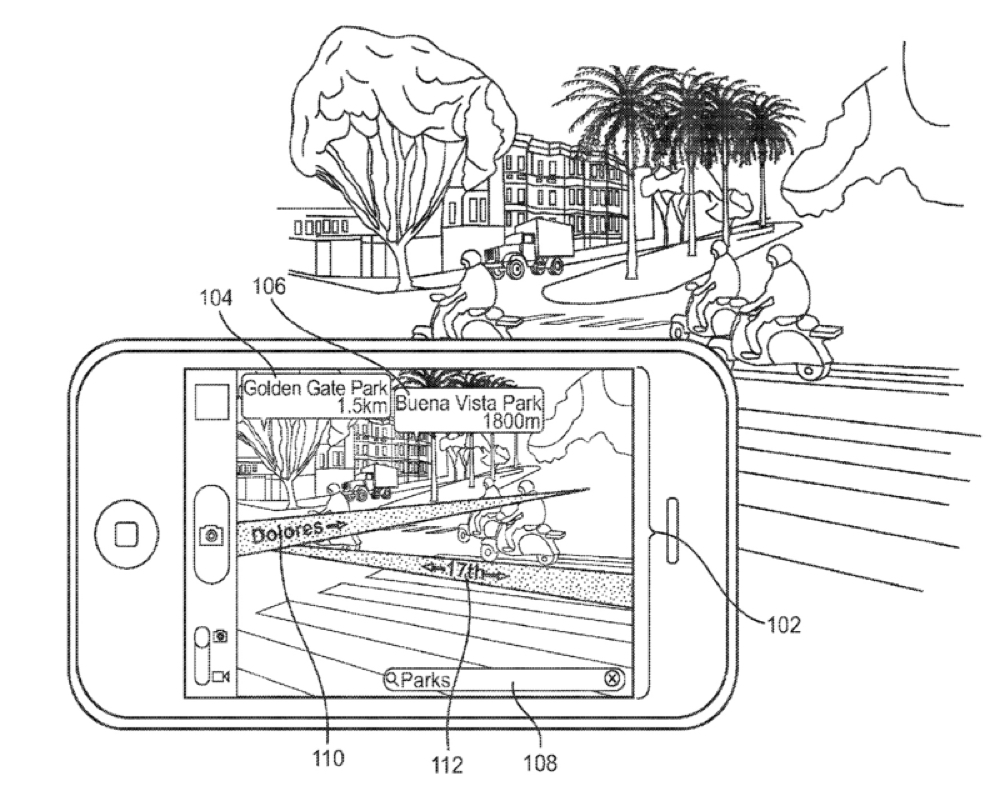Apple has been granted a patent (number 20170074675) for augmented reality maps, which hints at changes in a future version of its Maps app on the iPhone and iPad.
According to the patent, a user of, say, an iPhone points the device to capture and display a real-time video stream. The iDevice detects geographic position, camera direction, and tilt of the image capture device. The user sends a search request to a server for nearby points of interest.
The iPhone receives search results based on the search request, geographic position, camera direction, and tilt of the handheld communication device. The handheld communication device visually augments the captured video stream with data related to each point of interest. The user then selects a point of interest to visit. The iPhone visually augments the captured video stream with a directional map to a selected point of interest in response to the user input.

Augmented reality systems supplement reality, in the form of a captured image or video stream, with additional information. In many cases, such systems take advantage of a portable electronic device’s imaging and display capabilities and combine a video feed with data describing objects in the video. In some examples, the data describing the objects in the video can be the result of a search for nearby points of interest.
For example, a user visiting a foreign city can point a handheld communication device and capture a video stream of a particular view. A user can also enter a search term, such as museums. The system can then augment the captured video stream with search term result information related to nearby museums that are within the view of the video stream. This allows a user to supplement their view of reality with additional information available from search engines.
However, as Apple notes, if a user desires to visit one of the museums, the user must switch applications, or at a minimum, switch out of an augmented reality view to learn directions to the museum. However, such systems can fail to orient a user’s with a poor sense of direction and force the user to correlate the directions with objects in reality.
Such a transition is not always as easy as it might seem. For example, an instruction that directs a user to go north on Main St. assumes that the user can discern which direction is north. Further, in some instances, street signs might be missing or indecipherable, making it difficult for the user to find the directed route. Apple wants the iPhone to be able to overcome such problems.
Of course, Apple files for — and is granted — lots of patents by the U.S. Patent & Trademark Office. Many are for inventions that never see the light of day. However, you never can tell which ones will materialize in a real product.
